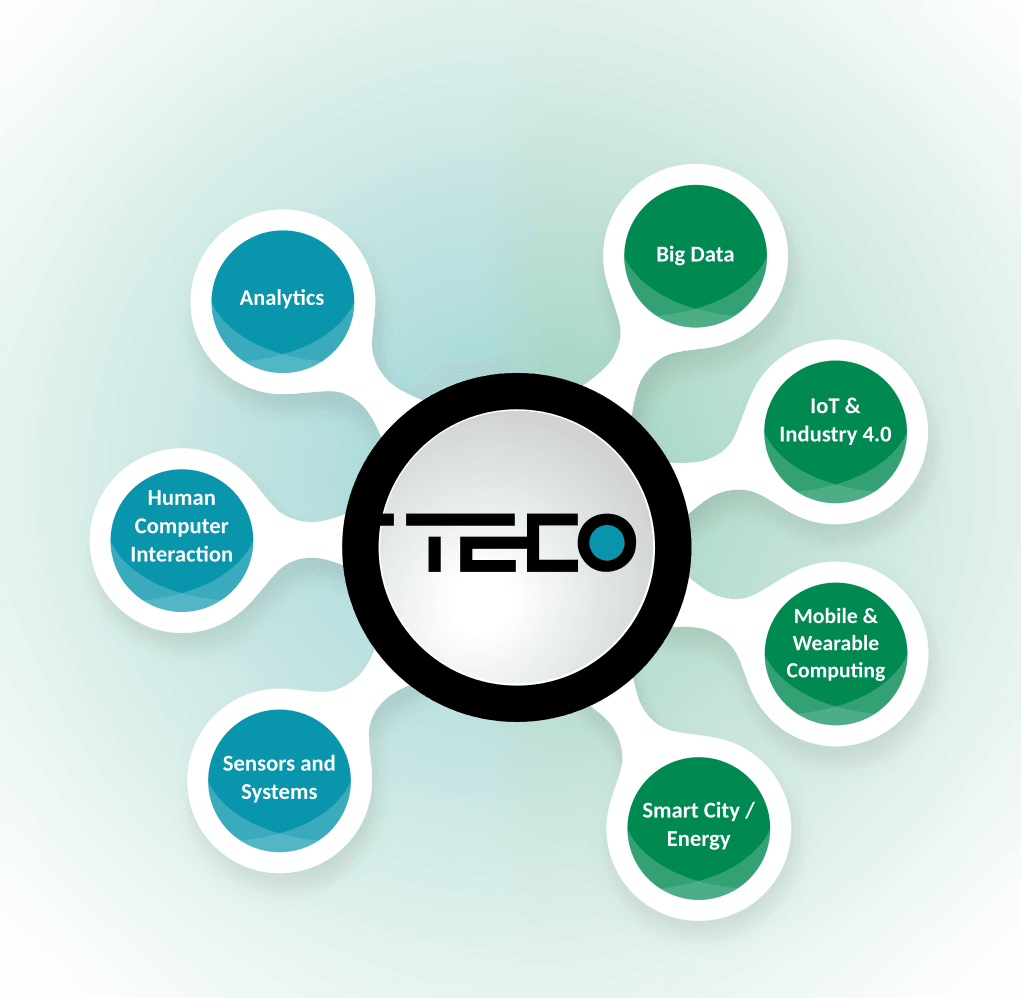Research – Projects
Since its founding in 1993, the TECO research group has been directing a multitude of projects across a wide range of research topics which can be divided into three broader Research Fields: Analytics, Human-Computer Interaction, and Sensors and Systems.
With partners from relevant industry sectors and the core idea to tie research and industry closer together, all of these projects are tightly linked to one or multiple Application Areas, most importantly Big Data, the Internet of Things & Industry 4.0, Mobile & Wearable Computing, and Smart Cities.
Other projects study how people interact with electronic devices and which tools can assist individuals or teams in different environments to benefit from technological advancement. Finding new forms of preparing and conveying information by using Augmented Reality or special feedback methods suited for particular contexts is essential to maximize the efficiency and usability of these computer systems.
Filter
OpenEarable
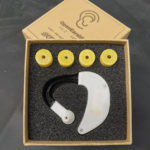
OpenEarable is a new, open-source, Arduino-based platform for ear-based sensing applications.It supports a series of sensors and actuators: a 9-axis inertial measurement unit, an ear canal pressure and temperature sensor, an inward facing ultrasound microphone as well as a speaker, a push button, and a controllable LED. We demonstrate the versatility of the prototyping platform more…
ML4Print

ML4Print In the ML4Print project, we collaborate with E.I.N.S. Software Solutions and Japico Dietz GmbH to tackle the document fraud using Artificial Intelligence. Document fraud is a major concern for the border control and hence for the security of the countries and current solutions lack the ability to identify the fraud in the documents successfully. more…
Startup Radar | EUHub4Data

Startup Radar Startup Radar is an advanced Startup Scouting System for Benchmarking & Tech Due Diligence. The system utilizes publicly available information to offer valuable insights into the tech startup ecosystem, including traditionally overlooked markets, such as women-led startups. It aims to level the playing field for investors, end-users, and clients, especially for those, such more…
TECO Wearable Framework (TWS)

TECO Wearable Framework The TECO Wearable Framework is a collection of electronic modules components, materials, embedded software as well as applications for User Interfaces and Data Analytics that is used in our research projects. The framework assembles work from students as well as PhDs over the past 20 years. Parts of the Framework are Haptic more…
SmartAQnet
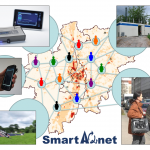
Air quality and the associated subjective and health-related quality of life are among the important topics of our time. However, it is very difficult for many cities to take measures that to accommodate today’s needs concerning e.g. mobility, housing and work, because a consistent data base with fine-granular data and information on causal chains is more…
edge-ml

edge-ml is a browser based, end-to-end machine learning framework for time-series data on microcontrollers. Data can be ingested using various methods, including live collection. Labeling is supported in a user-friendly manner with a graphical user interface. Based on the datasets and labels, users can train machine learning models which are deployable onto microcontrollers.
DroneCAS | EUHUBS4Data
DroneCAS The target is to capture digital data in the medium voltage grid, which supplies energy to European rural areas through over 4 million kilometers of power lines. On-foot inspections are cost-effective but do not capture digital data, limiting the implementation of AI analysis. Drones can provide high-quality data at a lower cost but require more…
FreshIndex | EUHub4Data

FreshIndex in EUHub4Data is a project that focuses on enhancing the safety and sustainability of the food sector by utilizing AI and IoT technologies. The project aims to develop a comprehensive monitoring system that tracks food quality and safety from farm to table, while reducing waste and promoting sustainability throughout the food supply more…
ARCTUS – Monitoring refrigerator condensing units | EUHubs4Data
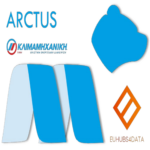
In the ARCTUS project we develop machine learning (ML) models to monitor refrigerator condensing units (RCU). Such ML models can bring significant value since they provide information on upcoming malfunctions that could stop the operation of an RCU and also predict future energy consumption. For this project we use public datasets as well as data more…
Coronazähler
Software Campus: Fit2Ear Otoplastics

In the Fit2Ear project we are applying smartphone depth cameras to generate customized otoplastics for earable computing. Contact – Haibin Zhao (project leader, haibin.zhao@kit.edu) – Tobias Röddiger Publication Haibin Zhao, Tobias Röddiger, Yufei Feng, and Michael Beigl. 2024. Fit2Ear: Generating Personalized Earplugs from Smartphone Depth Camera Images. In Companion of the 2024 on more…
ScaleIT: Scaling ICT for Increasing Productivity in mechtronics manufacturing

Germany has a leading position in the development of mechatronic systems. However, manufacturers often face the following contradiction: on the one hand they themselves manufacture high-tech for the production of tomorrow and on the other hand due to the high diversity in their own production they become fragmented with to manual processes. The lack of more…
Software Campus: FeinPhone
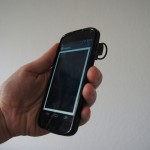
The ubiquity of mobile networks and smartphones in principle offers an excellent infrastructure for participatory environmental measurements, e.g. in Smart City scenarios. Modern smartphones are already equipped with a variety of internal sensors. In some current models, even environmental sensors for measuring temperature, humidity and air pressure can be found. However, phenomena such as the more…
MobileDust

Particulate Matter has a serious impact on health, well-being and the life expectancy of people. Today, only few stationary or mobile sensing stations are available for the monitoring of large areas, e.g. a city. This project aims to develop mobile particulate matter dosimeters that can be used for distributed Fine Dust Monitoring, e.g. through Participatory more…
Smart Air Purifier

In the Smart Air Purifier project, a prototypical microelectronic IoT-platform was developed and integrated into an air purifier unit for the use in cars. This Smart Air Purifier is outfitted with various environmental sensors, a microcontroller, and a Bluetooth Low Energy module. The system can determine the temperature, humidity, and concentration of various gases and particulate more…
Software Campus: AnKSeK – Anonymization techniques for automatic calibration of distributed sensor systems

In order to meet the increasing demands for high resolution and high quality environmental data, e.g. in Smart City scenarios, new approaches for sensing systems have to be considered. One alternative for using few professional measuring stations consists in crowdsourcing the data collection – Participatory Sensing. Data is collected highly distributed with mobile and inexpensive more…
Software Campus: MARC² – Improving Activity Recognition on Mobile Devices Using Crowdsourcing and Cloud Information

In Germany, the majority of people already owns a smartphone or another mobile device – and carries, unconsciously, a well-equipped sensor system with them. Just a few of these sensors are sufficient to draw conclusions about current and future activities or the context of the owner. Even non-physical data sources may provide relevant information for more…
bParts

The bPart is a sensor node with Bluetooth Low Energy (BT LE) radio and several off the shelf MEMS sensors, all highly integrated in a volume of less than 1cm³. Aside from the BT transceiver, the bPart features a light sensor, 3-axis accelerometer, temperature sensor, humidity sensor, battery, processing unit and a multicolor RGB-led for more…
Towards a mobile hybrid cloud: An EIT ICT labs activity

The project Towards a Mobile Hybrid Cloud is an activity in the Computing in the Cloud action line of EIT ICT Labs. It is a continuation of the 2012 project Towards a Mobile Cloud and has the goal to deliver concepts and tools for managing specific aspects of hybrid cloud environments, including the optimization of quality of more…
GPU + In-Memory Data Management for Big Data Analytics
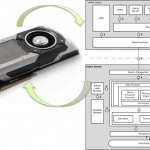
In this project, we develop a tool chain based on In-Memory Data Management and Parallel Data Processing in GPU using CUDA for large and intensive Smart Meter analytics.
Software Campus: AKTIFUNK

Human activity recognition, i.e. the recognition of a users’ current physical activity (e.g. walking, eating, sleeping) by monitoring and analyzing her/his behavior and the environment, can improve quality of living. However, current sensors for activity recognition have a number of drawbacks such as installation/attachment effort, battery runtime or privacy concerns. In AKTIFUNK, TECO is researching more…
Software Campus: Hot Updates in Distributed Systems

The Software Campus UHUS project is about updating the software components of distributed systems at runtime. It’s goals are to provide mechanisms to implement hot updates on individual devices, and provide planning strategies to coordinate update plans on many systems. We are working on identifying dependencies between software components, such as communicating devices in smart more…
KOORDINATOR
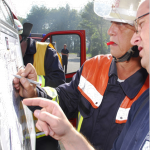
Koordinator is the follow up project to the sucessful BMBF project landmarke in which research was directed towards the creation of an ad hoc wireless sensor network to improve firefighter navigation. In Koordinator it is now investigated how this navigation support network may be extended using novel pervasive technologies to improve mission control in more…
Science Bridge Asia
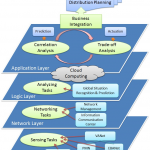
Description Science Bridge Asia: Urban Sensing of City Dynamics and Energy Use in the Beijing Metropolitan Area The “Science Bridge: Asia” program of the Robert Bosch Stiftung supports scientists working in Germany who would like to strengthen and rekindle exchange and cooperation with researchers in China, Indonesia, India, Japan, Singapore, South Korea or Vietnam. more…
TECO Envboard
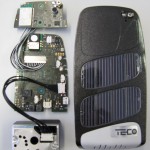
The TECO Envboard is an environmental sensing platform for research and development purposes. It carries a variety of commercial off-the-shelf (COTS) sensors, ranging from accelerometers over weather sensors like temperature, humidity and barometric pressure to sensors for gas concentrations and particulate matter. The Envboard is intended to be generically suitable for various application scenarios. more…
Polytos
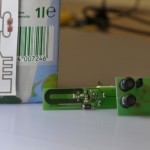
The objective of the research project Polytos is to develop printed organic circuits with integrated sensors capable of recording data such as temperature, humidity or light exposure. The deployment of these types of printed organic circuits for item-level-tagging in logistics or supply chain scenarios could be used as organic printed smart labels in the future. more…
DiagnOptiMesh

The DiagnOptiMesh project will conduct original research on the possibilities to diagnose and optimize the status of commercial wireless networks based on the WirelessHART standard. This will be the first attempt to establish network diagnosis and management for wireless field bus systems used in industrial automation that will collect diagnostic information and optimize the system more…
aletheia

Aletheia was a leading innovation project, sponsored by the Federal Ministry of Education and Research, that aims at obtaining comprehensive access to product information through the use of semantic technologies. TECO researches in federating information from heterogeneous device such as sensor nodes and RFID tags. Together with ABB we work on platform independent solutions for more…
Chosen

Chosen: Cooperative Hybrid Objects Sensor Networks. Chosen researches, develops and applies a ultra-low power standard chipset for wireless sensor nodes that will be SOA/Web2.0 enabled. The sensor node will have features as wake-up-on-radio pattern and will integrate directly into Web 2.0 applications. Applications areas cover automotive and avionics. TU Braunschweig leads the middleware and system/integration more…
Landmarke

In the landmarke BMBF project TECO researches how a mobile ad hoc wireless sensor network can improve firefighter navigation in harsh indoor environments. The landmarke vision describes a system which does not focus on precise locationing but on providing navigational support which builds on the existing skills of firefighters. During the mission the firefighters themselves more…
MoSe (Modeling of Sensor Network)
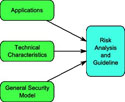
With the progress of wireless sensor network (WSN), this emerging technique is soon applied in many industrial projects. However, a standard to describe the security level in WSN is still lacking, which becomes very needful today. In MoSe Project we try to build a formal model to describe the security level of sensor network and more…
Project Intelligenter Güterwagen (Intelligent waggon)
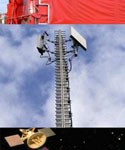
Wireless sensor networks are well suited for supervising conditions in various environments. When used in rail cargo for continuous monitoring of freight wagons, the results can provide many benefits for the operator, such as train sequence monitoring, monitoring of unusual events that may lead to accidents or estimation of optimal service points. The main challenges more…
SenseCast: Context Prediction for Optimisation of Network Parameters in Wireless Sensor Networks
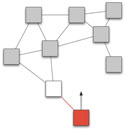
Topic Development and utilisation of methods of context prediction for the optimisation of data generation in wireless sensor networks Research area and field of work Computer Science / Electrical Engineering: Algorithms, Optimisation, Sensor Networks Summary The aim of the project is to develop new methods for context prediction in wireless sensor networks (WSN) and to more…
dinam

The dinam concept is a novel approach to simplified rapid development of wireless sensor network applications as well as an according WSN platform. As opposed to the traditional mote- based development archetype, dinam proposes combining the development steps into a single continuous, fluid process that is completely integrated into the node. The dinam concept sensor more…
LoCostix

Low Cost Smart-Labels for Logistic Processes in Retail Sponsor: Bundesministerium für Bildung und Forschung (BMBF) Projektdauer: 01.04.2006 bis 30.09.2008 (30 Monate) Ziel des Projektes Das Ziel des Projektes besteht darin das Inventurproblem im Einzelhandel zu lösen. Dazu sollen billige RFID-Tags mit gedruckten Antennen an jedem einzelnen Produkt angebracht werden. Durch Optimierungen der Kommunikationsprotokolle und mobile more…
P2P4Ubicomp

P2P4Ubicomp researches how to interconnect various distributed sensor networks, what performance measures are important, what and how information are replicated among involved remote locations etc. The project researches this issues regarding integrating into Internet and Telco environments and builds up large, world-spanning environments. Many industrial applications rely on sensors and sensor networks residing on machinery, more…
RELATE

The goal of RELATE is to research in spatial relationships between tangible objects that together form an interface both in P2P location hardware, software (recognition, protocols, applications) and user applications. One goal of the project is to develop generic building blocks for a lightweight short range (room size) location system that does NOT require infrastructure, more…
ParticleOS
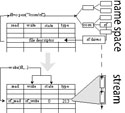
This project proposes a file system as an abstraction layer for a uniform way of accessing any system resource on wireless sensor nodes. Even functions and libraries can be represented and accessed in this uniform way allowing developers a novel way to design and implement applications. Tiny, Ressource poor sensor nodes require novel operating systems more…
Superimposing RF Transmission

Superimposing codes can be used for a variety of applications in sensor network communication. One of the earliest applications was precise time synchronization of sensor nodes and channel access negotiation in AwareCon. More advances applications are using superimposed codes for ultra-fast ultra power-saving transmission of information – up to 1000 times faster than with traditional more…
OSOITE

OSOITE: Overlay-network Search Oriented for Information about Town Events. OSOITE researches collaboration mechanisms of independent large scale sensor networks and how to improve user interaction with sensor data. Generally speaking people are likely to search things related to their daily lives in the real world ranging from straight-forward queries to complex ones. In order to more…
DFG SPP 1183: Organic computing – Emergent radio

Cooperative and collaborative strategies for transmission in wireless sensor networks enable transmission range restricted nodes to reach distant receivers by superimposing transmission signals. This addresses an important practical problem of wireless sensor networks. In this proposal we extend this strategy by emergent properties: We establish a method to adapt the collaborative emergent optimisation process by more…
COBIS

CoBIs develops a radically new approach to business processes that concerns physical entities in enterprise environments (goods, tools, etc). This approach embraces advances in networked embedded systems to embed business logic in the physical entities, thereby creating Collaborative Business Items (CoBIs). These items bring closer together the state of an enterprise as represented in a more…
AwareOffice

AwareOffice The AwareOffice is an technology equipped office environment like a meeting room supporting various actions like scheduling, presentation, annotation and providing different services concerning these actions. Goal The goal of the AwareOffice initiative is to provide a real world test bed setting for ubiquitous computing (UbiComp) applications. Therefore we trace two directions opening up more…
MemCam
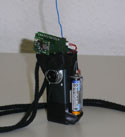
This project seeks to gather basic understanding in how far context aware camera systems are able to support human memory. The project seeks to develop a small wearable context aware camera device, gains insight into what activities are contributing to events we like to keep in memory, how to recognize these activities using a minimal more…
uParts

uParts are tiny little sensor network nodes that are very easy to deploy and run a 0-administration and low configuration (or 0-configuration when used with default) approach. The projects researches how to reach minimum deployment and maintenance costs of a sensor network and includes research on long lifetime hardware, 0-maintanance communication protocols, lower production costs more…
ContextAsAKey

ContextAsAKey is an approach to reach ad-hoc security and privacy in a Ubiquitous Computing environment without any user involvement – management, configuration nor administration. The basic principle is the use of the common context that exist when computing devices are located close to each other in the same physical environment. Technically the system bases on more…
PARTICLE

Particle Computer is an enabling platform for various scenarios related to Ubicomp. Particles are tiny wireless nodes where a huge variety of sensors can be attached. Further, the fully programmable micro controller accompanied by powerful libraries let novices as well as professionals implement applications in the fields of sensor networks, human-computer interaction, supply-chain management and more…
MEDIACUP

The MediaCup is an ordinary coffee cup augmented with sensing, processing and communication capabilities (integrated in the cup’s bottom), to collect and communicate general context information in a given environment. It is an example how to equip everyday objects with computing and communication capabilities. With the MediaCup setup (consisting of several cups and other equipment) more…
eSeal/DigiClip

The eSeal concept researches how to extend the concept of seals to general objects using Ubiquitous Computing technology. It identifies which additional threads can be detected using an electronic seal an implements several prototype seals. A major implementation path of eSeal was the DigiClip. The DigiClip system allows the tracking, synchronization and and integrity control more…
ParticleBasic

ParticleBasic is an attempt to simplify the programming model of the Particle Computer and enable rapid prototyping of applications. It therefore consists of two major components: A small scale VM on the Particle Computer and an interpreter running on top of it. A compiler for the development platform (written in JAVA) that generates byte code more…
In/Out Board
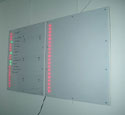
The In/Out Board is an ambient display showing the presence of persons in an office environment based on their activity. It integrates recognition of persons using RFID technology and PC based background services with an ambient display. Start/End: 2004 Partners: SAP AG Research Topics: RFID system, Integration of information infrastructure Application and economic dissemination: more…
P2P4RFID
Rather than using a hierachical approach to resolve RFIDs indentification code to database information this project researches in using Peer-to-Peer technology. The project showed that privacy of information can be better ensured and higher reliability can be gained using such an approach. A query, which consists of an identification string, is sent to the network more…
Smart-Its
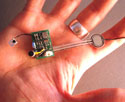
The Smart-Its project is interested in a far-reaching vision of computation embedded in the world. In this vision, mundane everyday artefacts become augmented as soft media, able to enter into dynamic digital relationships. In our project, we approach this vision with development of “Smart-Its” – small-scale embedded devices that can be attached to everyday objects more…
AwareCon

AwareCon is an approach for communicating in context aware environments and the network stack for the Particle Computers. AwareCon goes beyond traditional network approaches by using sensed context information from the environment to adjust parameters inside the network stack and by optimising the transfer of context information inside Ubiquitous Computing environments. It is therefore both more…
SmartShelf
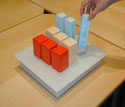
The SmartShelf is an RFID reader enabled shelf. The project goal was to research various strategies to understand and influence the customers’ decision behavior during the process of buying items in a retail store. The SmartShelf is a technology to reveal customers’ interactions with a product item in an unobtrusive way. Features: The SmartShelf is more…
Location Aware Communication/RAUM

RAUM is a communication principle for spontaneous communication between small devices in Ubiquitous Computing environments. Its central idea is to use location information to assign producers and consumers of communication events in such environment and provide location aware and location dependent routing to distribute information within Ubiquitous Computing environments. The centre of the RAUM system more…
UbicompBrowser / ElectronicManual
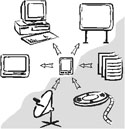
UbicompBrowser researches how electronic consumer devices embedded into the environment can be connected to the information network using Internet technologies. It results in a prototype that is able to bridge the gap between physical devices and information space by utilizing a handheld device equipped with a Barcode scanner – the UbicompBrowser. Using the UbicompBrowser software more…
TEA – Technology for Enabling Awareness

As computing devices and sensors get smaller, the interface with their user becomes more and more boring and irritating. The user has to explicitly input everything in detail in order to get some decent service from his device. Part of the solution to this problem is known as CONTEXT AWARENESS: thanks to hardware sensors and more…





